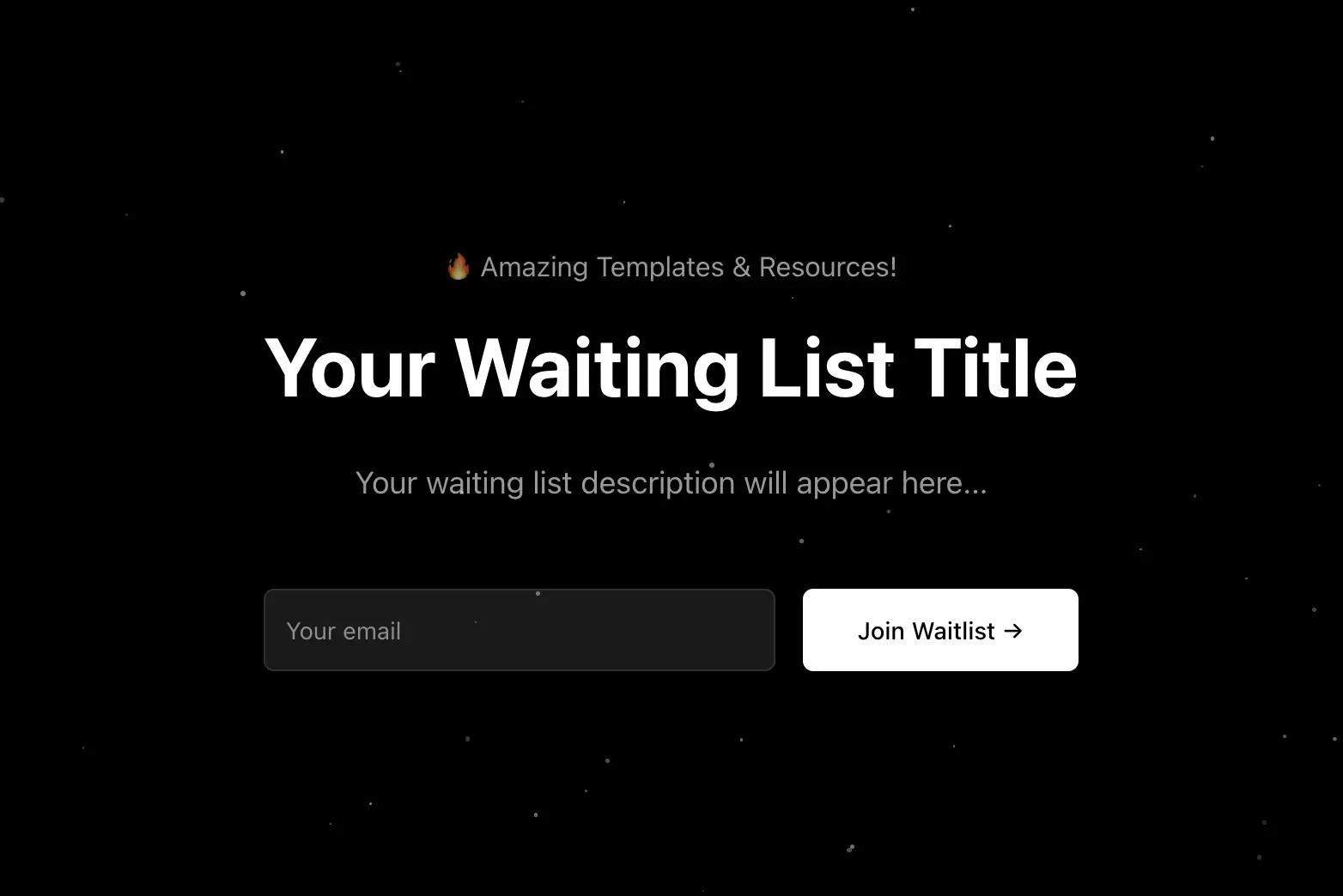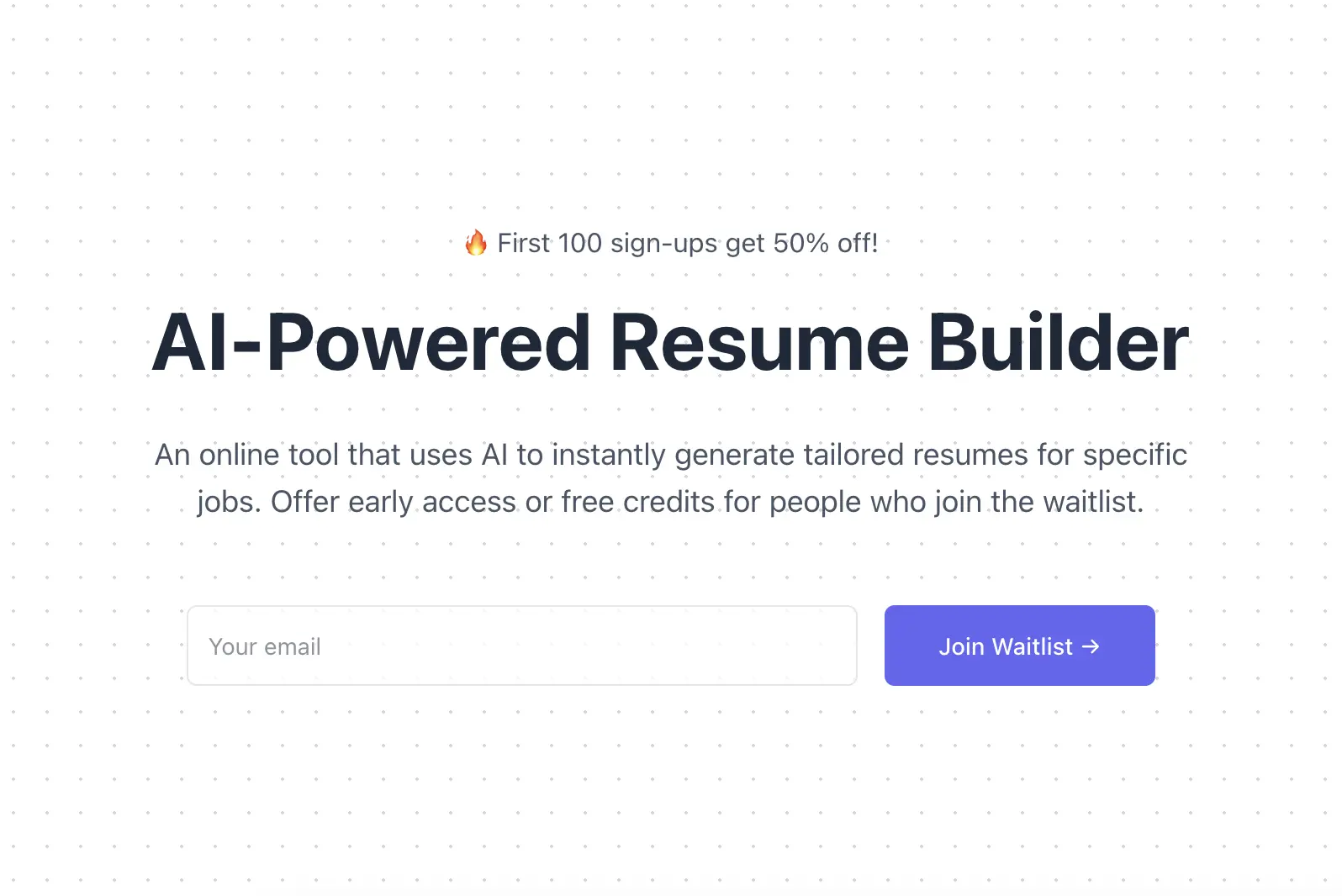
Every startup is founded on an idea. Business idea validation is the act of testing whether the idea has the potential to work. There is one main question founders must ask themselves, however, before actually building: Will it work? The act of testing the answer to that is business idea validation, and it is the best thing you can do to minimize risk and maximize the likelihood of creating something that others desire.
Throughout the guide, let's get to the very essence of what business idea validation is, why you should care, and how to do startup idea validation for an SaaS idea within 30 days or less. You're an inexperienced entrepreneur or an old-hand. Either way, it's your guide to fast and inexpensive testing of ideas.
What Is Business Idea Validation?
Business idea validation is the act of testing your idea with actual potential customers prior to product creation or full-scale business launch. It assists you in answering questions such as:
- Is there genuine demand for such an idea?
- Who are my customers, actually?
- What problem am I solving?
- Will individuals pay for this solution?
It is critical to separate idea evaluation from validation. Idea evaluation is concerned with the application of formal frameworks (such as the Lean Canvas or the ICE score) to estimate the potential of several concepts. Real-world testing in the form of customer conversation, data gathering, and measuring genuine demand is validation.
Think of validation as a scale with different levels. It's not just all or nothing. It can vary from 0% to 100%.
Why Is Validating Your Idea So Important?
According to CB Insights, 42% of startups fail because there's no market need. That's right - the #1 reason new ventures crash and burn is because they build something nobody wants. Business idea validation exists to protect you from that fate.
Proper validation can assist you:
- Do not construct products on hypotheses
- Avoid wasting time and resources on unproductive notions
- Get to know them better
- Establish credibility among co-founders, investors, and early adopters
In essence, validation is not only an action, but an attitude. And it needs to begin as soon as possible.
The 3 Primary Methodologies to Validate SaaS Concepts
There are three main ways founders validate SaaS concepts, particularly in the first 30 days of testing. Each has its advantages, and the best approach is often the combination of them.
Approach 1: Landing Pages (Low-Touch)
Landing pages are well-suited to straightforward, self-service SaaS products. The aim is to prove whether you can drive traffic and turn it into email signups for an early access list.
Key steps:
- Construct a straightforward, benefit-focused landing page
- Explain the problem and your proposed solution
- Include a signup form or call-to-action
- Drive traffic through social media, forums, or inexpensive ads
Between 5% and 30% is the range for real interest. A small waitlist is itself one very strong validation signal - and an enormous launch asset. It enables you to acquire feedback, iterate on messaging, and even execute pre-sales campaigns.

Approach 2: Conversational Validation (High-Touch)
Also referred to as customer development, this approach entails reaching out to potential users directly. You can do so through warm connections (network) or cold outreach (email, LinkedIn, or DMs).
Your objective is not to sell but to listen. Dialogue should discuss:
- The user's existing workflow or pain area
- Their willingness to pay for an improved solution
- What to expect from such a tool
You're looking to obtain 10–40 verbal commitments or pre-signups. These one-on-ones assist you in sharpening your positioning and knowing whether individuals care about the problem you are trying to solve.
Recommended read: The Mom Test - the book teaches you how to ask good questions and obtain genuine feedback through customer interviews.
Approach 3: The Best of Both Worlds (Combined Method)
The strongest strategy is combining both tactics. Begin by conversing with actual people to dial in on the idea and message. Next, create a landing page that represents your revised value proposition.
Advantages of the integrated approach:
- You clarify yourself beforehand when you invest in traffic
- You collect both quantitative (conversion) data and qualitative (conversations) data
- You establish a strong waitlist and feedback cycle
This combination puts you in position for success - because you've confirmed both the willingness to act and the level of interest.
Step-by-Step Business Idea Validation Process
Let's go through an overall framework to validate any business idea:
Define the problem clearly
Every company is there to fix an issue. If you cannot say what the problem is, you are not yet ready to validate a solution.
Ask yourself:
- What is the pain that this idea addresses?
- Who feels the pain the most?
- How are they addressing it now?
Clarity is the basis of all else.
Speak to Real People (Customer Validation)
Begin by speaking with 10-20 prospective customers. Don't sell - listen.
Ask questions like:
- Your greatest challenge with [problem]?
- What steps have you taken to resolve it?
- What is frustrating about existing solutions?
If several people characterize the same pain, you're onto something.
Conduct market research (Market Validation)
Delve into search information and community signals:
- Google Trends and Keyword Planner for Demand Insights
- User pain points on niche forums (Reddit, Indie Hackers)
- Twitter/X threads to check real-time views
You'd like to verify there is active interest and unfulfilled demand.
Construct a Landing Page or an MVP

Don't build an entire product. Build something as simple as a landing page that describes your idea and includes a clear CTA:
- Join the waitlist
- Pre-order or book an advance spot
- Sign up for a demo
Do it using no-code platforms such as Webflow, Carrd, or Covalidate within just a few minutes.
Generate Traffic and Gather Data
Promote your landing page through:
- Community posts
- Twitter or LinkedIn threads
- Small paid advertisements
Observe how others are reacting. Are people actually joining? If not, adjust your message or target a smaller market.
Pre-selling or Obtaining Commitments
If you are able to obtain pre-orders or advance commitments, you've got good evidence of demand. Even having a few paid registrations or genuine interest is better than having a thousand likes.
Validating Without Spending Money
Validation does not need an enormous budget. You can:
- Message potential users in Slack or Discord groups manually
- Use free tools such as Notion, Airtable, and Google Forms
- Provide a complimentary consultation or 10-minute phone consultation to initiate discussions
It is about the effort - not the cost.
Typical Errors to Avoid
Validation is straightforward, but it is very easy to do incorrectly. Be careful of these:
- Speaking with friends (they are biased)
- Accepting compliments as evidence ("That's cool!" is not validation)
- Constructing too much first and testing later (your landing page IS your MVP)
- Avoiding conversation altogether (they disclose what metrics cannot)
Final Thoughts: Build with Signals, Not with Assumptions
Business idea validation is your guiding light. It allows you to transition from hypothesizing to knowing - picking up signal after signal until you feel ready to invest further.
You do not require an ideal product. You require genuine interest. A wait list. Chats. Commitments. Momentum.
No matter whether you validate with landing pages, customer phone calls, or both - the objective is to learn quickly, fail small, and double-down when you notice traction.
Begin today. Speak with 5 people. Launch the page. Share the idea. And keep in mind - validation is not to prove the idea is good. It is to prove others are interested in it.
Need an easy way to validate your SaaS idea? Use Covalidate to try out a waitlist, validate demand, and gather actual signals before you build.

Written by Terry Wilson
Expert in startup validation and product development with over 8 years of experience helping entrepreneurs bring their ideas to market.
Share this article
Have an Idea? Let’s Test It Together.
- Launch your waitlist in seconds!
- Get expert feedback, not guesswork
- Know if your idea is worth building
- Learn fast, fail less, and build smarter
Related Articles

How to Test a Business Idea: 10 Steps to Know It's a Winner
Discover how to test a business idea before investing time and money. These 10 practical steps will help you validate your concept and ensure it has real potential to succeed.

How to Validate a Startup Idea: 10 Steps to Test Your Dream
Learn how to validate a startup idea with our practical, no-nonsense guide. These 10 proven steps will help you determine if your concept has real potential before investing time and money.